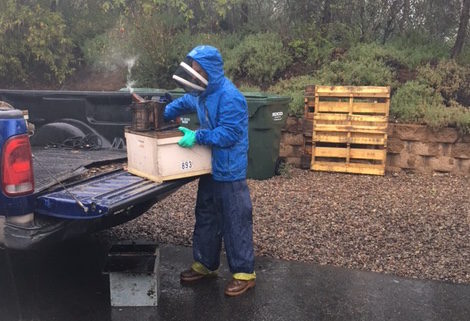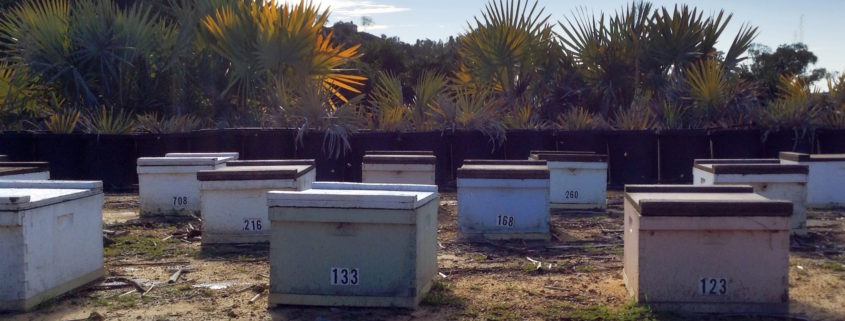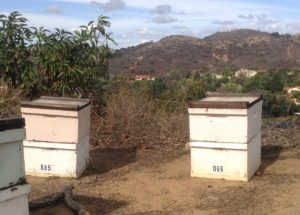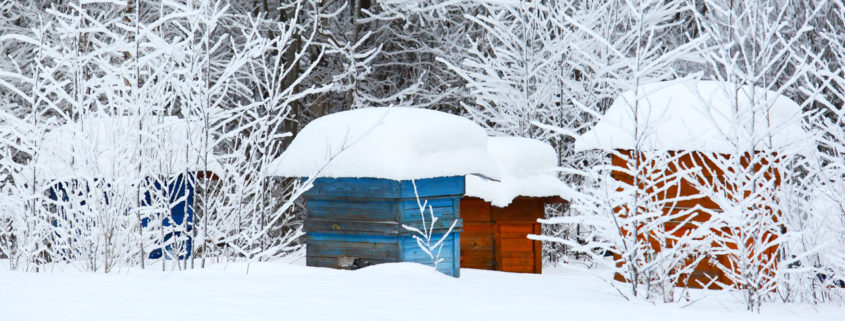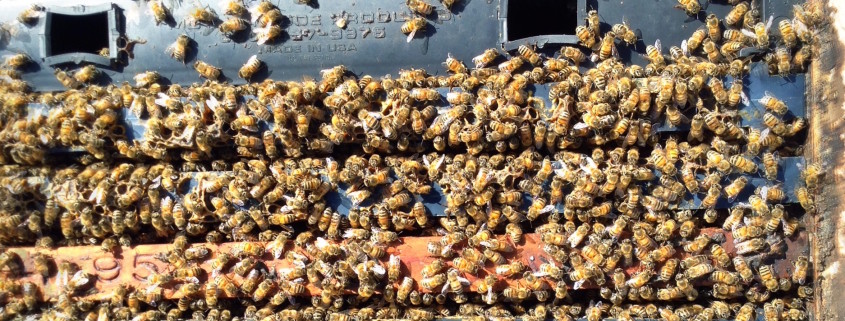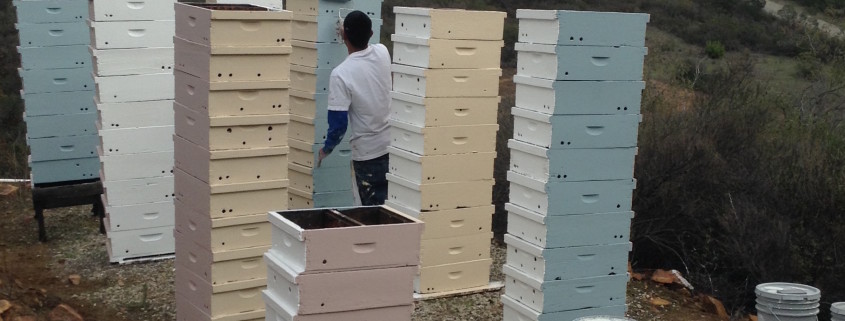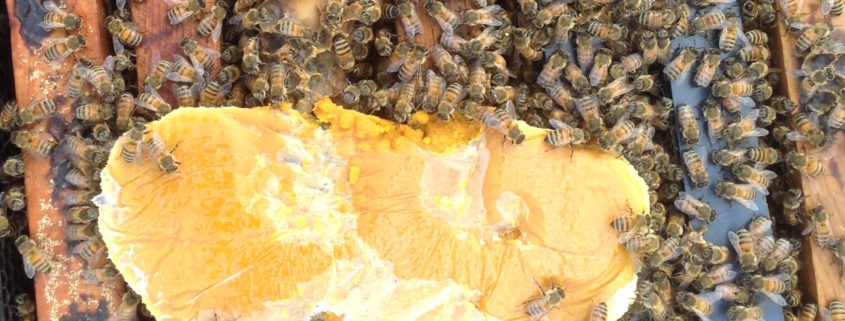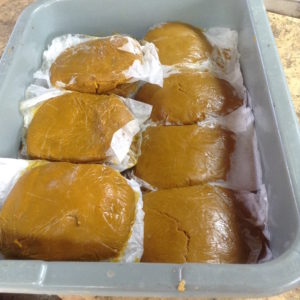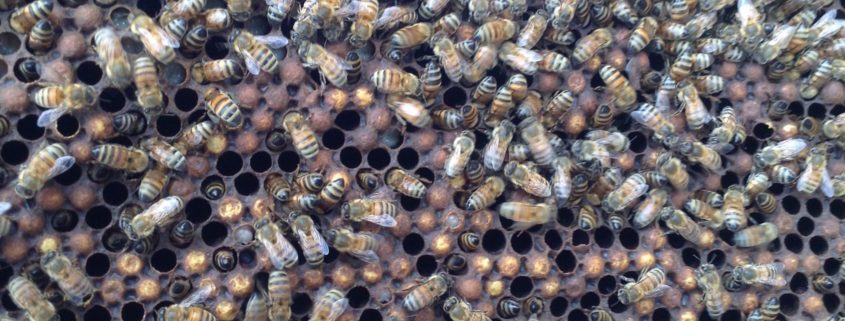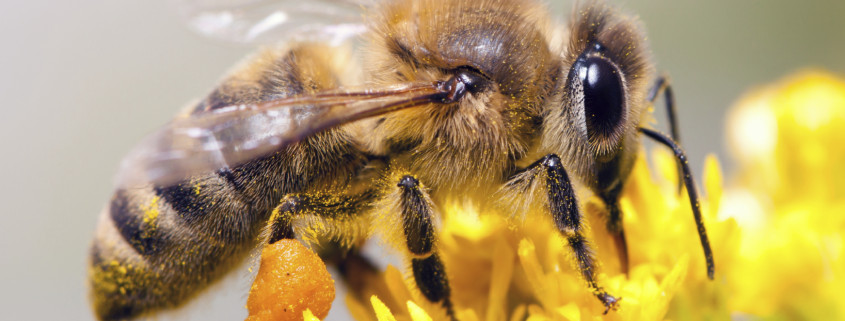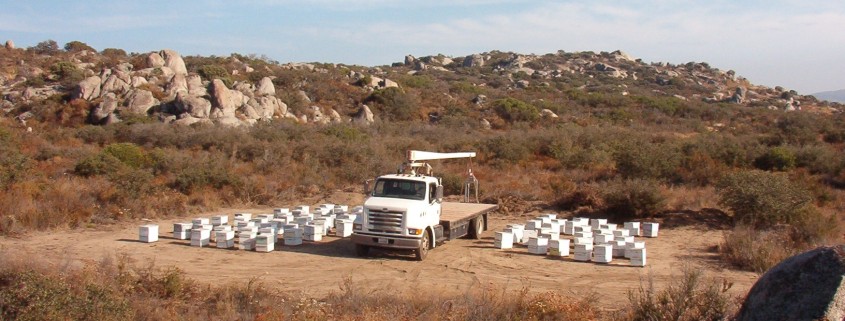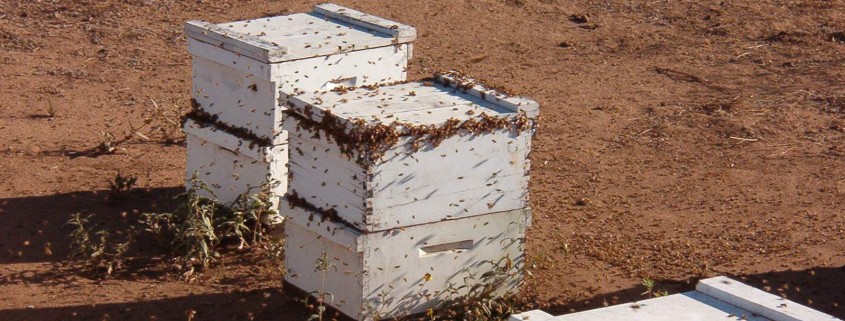Everything Is Just Right
Wildflower Meadows’ employees have been out and about lately moving bees in anticipation of the upcoming queen-rearing season. Raising queens waits for no one, and the work generally continues rain or shine. At this time of year, we spend our mornings grading our bee stock, then shuffling individual colonies to the proper yards. Breeders go to the queen rearing yards, strong drone rearing colonies get consolidated near our mating areas, colonies are re-graded, and so on . . .
On the surface, this photo looks like a miserable situation. Here, one of our employees is moving a few breeder colonies to our queen-rearing area. It is pouring rain, and around the apiaries there is mud absolutely everywhere. One might think that all is wrong, but truly, everything is just right.
First of all, we are finally experiencing rain here in Southern California! This means that the drought conditions are subsiding, and the bees will have an abundance of foraging opportunities later in the season. Second, the breeders that we are selecting look great! They have overwintered exceptionally well and are now being handpicked for the upcoming season. Third, our Columbia rain gear comes from the Pacific Northwest, where they know a thing or two about rain and keeping a person dry. And finally, because we just installed new mud tires on this pickup truck – we are just in time to have a little fun and sling some mud!

